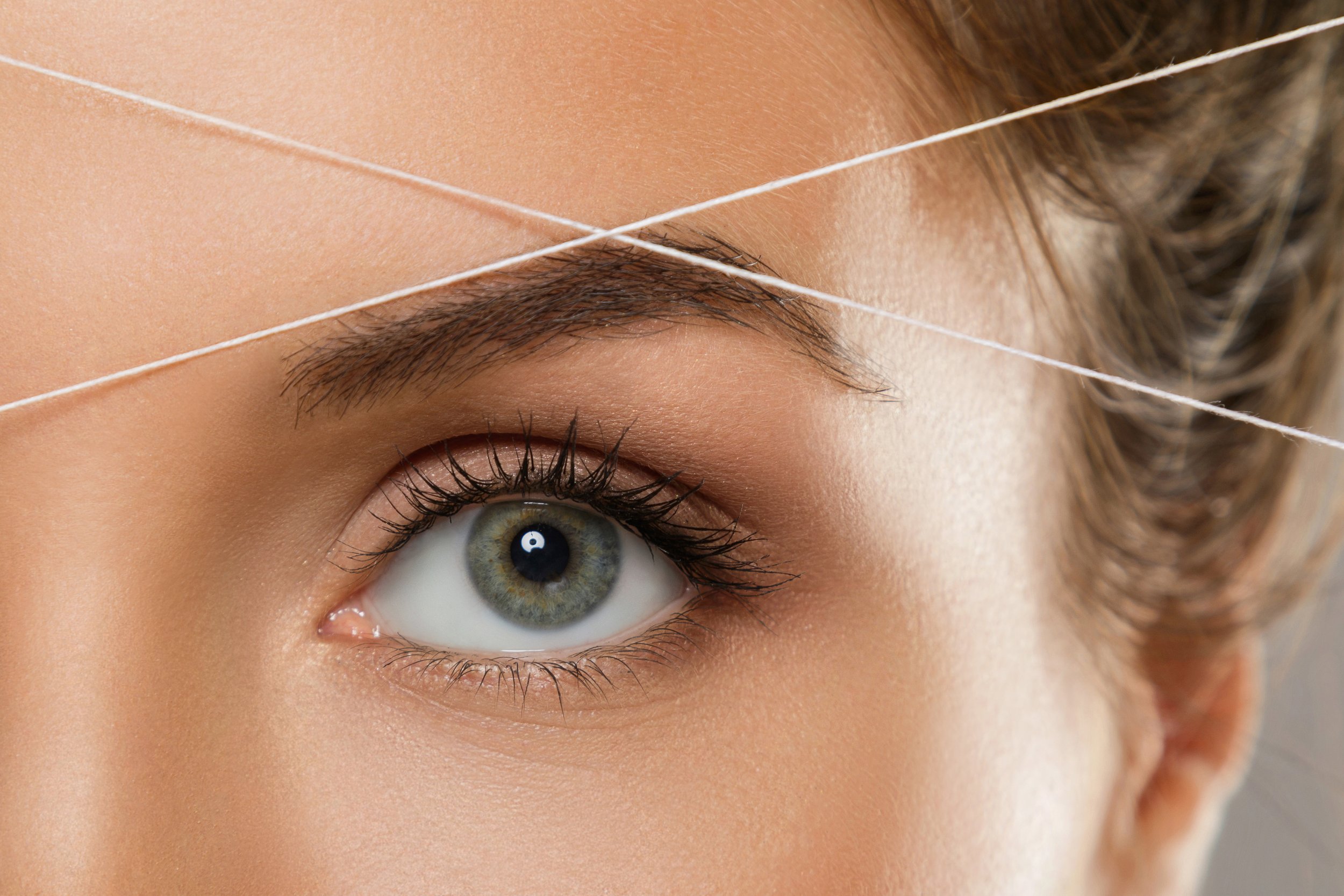What Is Eyebrow Threading and How Does it Work?
Believe it or not, your eyebrows are a massive part of your look. They can help shape and define your face, and with the right grooming, they can transform your appearance. One of the most popular and precise methods is eyebrow threading, and at Glow Up Studio in Dallas, we’ve perfected this ancient technique to help you achieve flawless brows.
Eyebrow threading uses a thin piece of thread to remove eyebrow hair. It’s a simple yet highly skilled process that delivers quick and controlled results. Whether you’re in Uptown, Highland Park, or anywhere else in the Dallas-Fort Worth area, here’s everything you need to know about eyebrow threading at Glow Up Studio.
What Is Eyebrow Threading?
Eyebrow threading is the process of removing eyebrow hair using a piece of thread. This technique focuses on the eyebrow area, ensuring precise and clean hair removal. The thread, typically made of cotton, is thin yet durable to allow for a strong hold on each strand of hair.
This practice has roots in several ancient cultures, believed to have originated in India, Iran, or China. Historically, threading was used not only for cosmetic purposes but also as a cultural ritual. Today, threading has become a popular method worldwide and is especially beloved here in Dallas for its precision and effectiveness.
How Does Eyebrow Threading Work?
Eyebrow threading is a form of epilation, meaning it removes the entire hair, including the root. The process begins with cleaning the skin under and around the eyebrows with a gentle cleanser to ensure a sterile environment and make it easier to see the hairs.
At Glow Up Studio Dallas, our skilled threaders use the butterfly method: holding a piece of thread between their fingers, twisting it, and moving it over the targeted hair. The twisting motion traps hairs between the threads and lifts them out whole, leaving behind smooth, defined brows. This process is quick, often taking just 10 minutes.
Can You Thread Other Facial Hair?
Threading is excellent for precise areas like the eyebrows or upper lip. While it’s not ideal for larger body areas, it’s perfect for detailed grooming. At Glow Up Studio, we specialize in eyebrow threading but also offer threading for other facial areas upon request—perfect for Dallas locals who want a polished, flawless look.
The Pros and Cons of Eyebrow Threading
The Pros of Eyebrow Threading
Precision: Threading provides unmatched precision, ideal for shaping brows to suit your face.
Gentle on Skin: It’s a non-invasive method with no chemicals, making it perfect for sensitive skin.
Fast and Efficient: Most threading sessions take less than 15 minutes.
Long-Lasting Results: Threading removes hair from the root, so you can enjoy beautifully groomed brows for 4-6 weeks.
Affordable Beauty: At Glow Up Studio, threading starts at competitive prices, ensuring high-quality results without breaking the bank.
The Cons of Eyebrow Threading
Potential Redness: Some redness or puffiness is common but temporary. Applying aloe vera post-treatment can soothe the area.
Pain Sensitivity: Though less painful than waxing, threading does involve minor discomfort.
Skilled Technicians Required: Threading is an art. That’s why it’s essential to visit a trusted studio like Glow Up Studio in Dallas, where our technicians have the experience to avoid mistakes.
Is Eyebrow Threading Worth It?
Absolutely. If you’re looking for a quick, hygienic, and precise method to shape your brows, threading is a fantastic option. Dallas locals love threading for its gentle approach and lasting results. Whether you’re heading to brunch in Bishop Arts District or a night out in Deep Ellum, threading can help you look and feel your best.
How Often Should You Get Your Brows Threaded?
Most people find that threading every 2-3 weeks maintains their ideal brow shape. If you’re unsure about timing, our team at Glow Up Studio Dallas can provide personalized recommendations based on your hair growth and desired look.
How Much Does Threading Usually Cost in Dallas?
At Glow Up Studio, eyebrow threading prices are competitive with other Dallas salons, typically ranging from $10 to $30. We pride ourselves on offering premium services that are worth every penny. Combine threading with our other beauty treatments, like lash lifts or facials, for an all-in-one experience.
Finding the Right Threader in Dallas
Finding the perfect threader can feel overwhelming, but we’ve got you covered. Here’s what to look for:
Experience: Our technicians have years of expertise, ensuring precise, consistent results every time.
Hygiene: We use clean, high-quality materials and follow strict sanitation protocols.
Reputation: Glow Up Studio is one of Dallas’ top-rated beauty studios, with glowing reviews from satisfied clients.
Tips for First-Time Eyebrow Threading
Research: Check reviews and choose a reputable studio like Glow Up Studio Dallas.
Avoid Makeup: Arrive with a clean face to prevent irritation.
Take a Pain Reliever: This can help minimize discomfort during your session.
Aftercare: Apply aloe vera or a soothing cream to reduce redness and calm the skin.
Why Dallas Locals Love Glow Up Studio for Threading
At Glow Up Studio, we know Dallas is full of vibrant, stylish individuals who value their appearance. That’s why we offer expert eyebrow threading tailored to your unique face shape. Our studio, located conveniently in Dallas, provides a welcoming environment where you can relax and enjoy high-quality beauty services.
Conclusion
The next time your brows need some TLC, consider eyebrow threading at Glow Up Studio in Dallas. With experienced technicians, a clean and inviting atmosphere, and a commitment to precision, we’ll help you achieve the brows you’ve always wanted. Ready to book your appointment? Visit our website or call us today to schedule your session. Let’s bring out the best in your brows!

